- Home
- Margaret Atwood
In Other Worlds Page 5
In Other Worlds Read online
Page 5
What does the voice say? Among other things, it says that its name is I AM THAT I AM, or possibly I WILL BE WHAT I WILL BE. God is a sort of gerund, a noun-verb, and the burning bush that is not consumed is curiously similar to the vision of the pre-Socratic philosopher Heraclitus, for whom the source of all things was fire—not a physical object but a process.
In any case, hearing a bush speak, especially in such a portentous manner, is not something a Jane Austen heroine would be likely to experience. Such an event might happen in an Ann Radcliffe Gothic shocker, but only if there were a sinister count hidden inside the bush. It could happen easily in a fairy tale, however, or a “fable” like Alice in Wonderland, or in a Greek myth at the point at which some hapless maiden is being transformed into a sapling or other item of vegetation by a god. And it could happen effortlessly on Planet X.
All myths are stories, but not all stories are myths: among stories, myths hold a special place.
I went to college in the late 1950s at the University of Toronto—a place and time when thinking about mythology—or very ancient, centrally important stories and their nature and form—was at the top of the agenda. Edmund Carpenter, a noted anthropologist, was co-editing a magazine called Explorations, highly influential at the time. Working with him was Marshall McLuhan, soon to become the pre-eminent theorist in the field of media and communications. The first of McLuhan’s books was The Mechanical Bride, which analyzed such things as advertisements and comic books for their mythic and psychological content, and illustrated itself with reproductions of the ads, and thus got pulled from the market by soap flake companies and such for copyright infringement; but you could buy this book on the sly from McLuhan’s basement, which I did. Due to my interest in cereal boxes, magazine ads, and comics, I of course found this book delectable.
A third figure loomed large in the literary world of that time. His name was Northrop Frye, and he taught at Victoria College, which I myself attended. I only took half a course from him—the “Milton” half of “Spenser and Milton”—and he was not a direct influence on the kind of student writing that I was by that time doing; but he validated the literary enterprise itself by underlining its importance to civilizations. He had the added benefit of being a reader at all three brow levels, which pleased me a lot: it’s always encouraging to be told that it is intellectually acceptable to read the sorts of things that you like reading anyway.
Northrop Frye from Northrop Frye Newsletter Vol 8. No. 1:
At that time Frye had published two books of criticism that had taken academia by storm: Fearful Symmetry, a study of William Blake’s long narrative poems, which Blake called “prophecies,” and Anatomy of Criticism, a hugely ambitious project that set up a series of templates into which literary works could be slotted according to various overlapping and interlocking characteristics. Myth featured largely in this book.
Every year, Frye gave his famous Bible course, “The Bible as Literature,” which was audited by students from miles around. “Are you saying that the Bible is a myth?” one student asked him. “Yes,” Frye replied. “That is what I am saying.”
But what did he mean by “myth”? His interest in it came from his concern with story forms, and with how literary works and possibly the human imagination itself were structured. For readers, it cleared up some confusions common at the time—confusions about genre and rhetoric, for instance: there was no point in expecting from an apple the same qualities you might find praiseworthy in a steak.
Here’s a very simplified version of Frye’s theories about how “myth” and its patterns were structured. In Greek mythology there are four ages of man: the golden age, the silver age, the bronze age, and the iron age. These correspond to spring, summer, autumn, and winter, and also—says Frye—to four main types of story: the romance (spring), in which the hero journeys on a quest, kills dragons, and rescues maidens; the comedy (summer), in which the hero and the maiden can’t get together due to interference by censorious old fogies, but which, after complications, ends with a marriage; the tragedy (autumn), in which the protagonist falls from a height of power and prestige and ends up dead or in exile; and irony (winter), in which ancient geezers and biddies sit round a fire in a frozen world and tell tales. Strangely enough, the tales told by the geezers usually turn out to be romances, in which the hero journeys on a quest, kills dragons, rescues maidens, and so forth. And so the story cycle begins again.
Set beside this circular, cyclical, seasonal pattern is a linear pattern—one with a beginning moment, a middle journey, and a final endpoint. This pattern is most fully illustrated in Western culture by the Christian Bible, which begins with Creation and ends with Revelation. The Book of Revelation is usually thought of as “the Apocalypse,” in which the world comes to an end in awful destruction, four horsemen, plagues, fire, and so on. But it really means what it says: “Apocalypse” means Revelation, the moment when all becomes clear, all is revealed. In the Christian Bible, the Creation is followed by the Fall, which is a tumble from a timeless paradise into a space-time continuum that contains death; or, as Stephen Dedalus says in James Joyce’s Ulysses: “History is a nightmare from which I am trying to awake.”
In between the bookends of Creation and Revelation are a large number of stories, culminating in the life and death and reappearance and ascension of Christ, and finally the Apocalypse, the Last Judgment, and the arrival of a perfect Heavenly society, called the New Jerusalem—as opposed to the bad society also presented, usually identified with Babylon and/or Rome. The story ends there rather than beginning again—as it does in cyclical myth structures—since presumably once a thing is perfect and complete, nothing can change. “Forever and ever” means that time has come to an end.
Frye also explores a set of archetypes, each of which has a positive (or sacred) and a negative (or demonic) version. (His particular set is specific to Judeo-Christianity and the cultures associated with it, but all story clusters seem to sprout such positive-negative pairs.) There are the Tree of Life in Paradise and its opposite, the Tree of Death that is the Cross. There are the City of God and the City of the Devil. There are the Food of Life—of which the Eucharist is the symbol—and the Water of Life, and their negative versions, the Food of Death—the fruit of the tree of knowledge in Genesis—and the Water of Death—usually in the Bible represented by the sea, which is why the Book of Revelation says, “There shall be no more sea.” There is Nature as the Peaceable Kingdom or paradise where the wolf lies down with the lamb, and then there is Nature as howling wilderness, haunted by jackals presiding over ruined dwellings, which is frequently invoked in the Bible as a curse.
At the two extremes of this series of paired opposites are the heavenly realm, summing up everything we might be expected to enjoy, and the hellish one, incorporating everything evil and painful. Between these two poles stretches human life—the Merry Middle Earth of both folk ballads and The Lord of the Rings—and the plots of narrative literary works of all kinds show movement in one direction or another. There are narratives of fall, in which we move from the heavenly sphere to the earthly, or from the earthly to the demonic; and narratives of ascent, in which we move from hell up to earth—release-from-prison narratives are like this—or from earth up to heaven. Narratives of fall feature separation from loved ones, calamities, imprisonments, tortures, mechanical beings that mimic life, defeats, dehumanizations, and deaths; those of ascent feature reunion with loved ones, getting out of the bellies of whales, healing, nature in its more benevolent aspects, life abundant, and birth or rebirth.
As I’ve said, Frye was concerned mostly with literary criticism, and myths interested him as structural elements in works of literature. He used the word myth to mean story, without attaching any connotation of truth or falsehood to it; but a myth is a story of a certain kind. The myths of a culture are those stories it takes seriously—the ones that are thought to be key to its identity. Thus it was a grave matter to be told as a Canadian—as one const
antly was told in the late 1950s—that one lacked a mythology. Before Leonard Cohen was a singer he was a poet, and the title of his first poetry book was Let Us Compare Mythologies. It was a title of its time.
Myths are not the only kinds of stories in any culture, of course. There are jokes, for example—nobody expects those to be literally true. And there are parables or fables, such as the Fox and the Grapes and the Good Samaritan. These are told to point a moral, and the moral is not dependent on the existence of a grape-loving fox or an actual Good Samaritan. “There was once” is thus a somewhat different beginning from “There was.” Folk tales are stories, but few feel the need to believe in a real Aladdin or some real Twelve Dancing Princesses. There are anecdotes about old Joe down the road and Mrs. Smith across the street, or Jennifer Lopez. These are gossip. We know the people are real—they exist—but our feelings about our own inner essence—call it the soul—are not much affected by stories about them, however juicy these may be.
There are histories—stories about the past that are more or less demonstrably based on fact. (We don’t know whether there was an Icarus, but we’re pretty sure there was a Henry the Eighth.) These kinds of stories are viewed with considerable gravitas. People argue about histories, especially histories about their own group or country, because these really do affect how we assess our place in the world. Were we the good guys? We love people who tell us so. Were we the bad guys? We certainly hope not. If we did behave badly, why did we? Were we self-deluded, or misled by folks with ulterior motives? Did we act in good faith, or were we cynical? We need to know, because we assess our present behaviour in terms of our past behaviour, risky though such an enterprise may be, and even though we—individually—may have been born years or decades after the events in question. With history, something is at stake; it matters to us whether this or that version of “our” history is true because we think we’re being told something about ourselves. Never mind that “we” were not actually present, at the First World War, or the Second, or the bombing of Hiroshima: everyone has a fully expandable ego-image, and in such matters we extend our ego beyond our own body, family, house, car, city, and state to include our country, past and present. That’s another thing about myths: they gather in and circumscribe their target audience. They make a collection into a collective.
Ancient myths precede histories and were once thought to be histories. They were thought to be true accounts of important matters. As SF often shares many features of such myths, we might want to consider these important matters. Here are some of the questions both SF and myths can pose, with some of the answers myths have provided.
Where did the world come from?
Origin myths can be divided roughly into worlds created by a sexual act of some kind (the Earth hatched from an egg, Father Sky copulated with Mother Earth), worlds that were moulded (an aquatic animal or bird dove down and brought up some mud, and the world was made from that), and worlds sung or danced or spoken into being by gods, as in Let there be light. One of my favourites is the Mayan creation myth. The gods created the world, but first they worried. They worried a lot. They worried and worried and worried. I’m with them.
Where did people come from?
They were fashioned from dirt, or ribs. They came from stones. They were hatched out of an egg. Mother Earth gave birth to them. The gods created them as playthings and slaves. They were baked like cookies.
Where did OUR people come from?
Dragon’s teeth. Out of a clam. Descended from the Sun God. Etc.
Why do bad things happen to good people?
Because God and Satan make a bet on Job. Because the House of Atreus is cursed. Because these things are sent to try us, and God chastiseth whom He loveth. Etc.
And, more annoyingly: Why do good things happen to bad people?
Yes: why do the wicked prosper? Myth sometimes solves this one by an assurance that the bad people will get their comeuppance later, in the afterlife if necessary, but often things are much more ambiguous. God knows, is one answer; there must be a reason, but we see through a glass, darkly, so we don’t know what the reason is.
What is right behaviour?
Lots of answers here. Under Lifestyles, everything from shoes and where they can be worn, to hairstyles, to forbidden or festive or sacred foods; and under Ethics, many choices too. As a guide to daily life, myths are slippery. We hope that good actions are rewarded and bad ones punished, and that murders and stealing and lying and cheating will be frowned upon by the story, as they are in most human societies; but in myths, it is not always so.
What do the gods want, or God, if it’s a monotheism?
The answers range everywhere from your first-born to burnt kidney fat to endless devotion and obedience to not sleeping with the wrong person to having to avenge your murdered father by killing your mother. That’s the problem with gods. They specialize in cleft sticks—damned if you do, damned if you don’t—and they’re maddeningly oblique. Gods don’t come with clear instructions; or not according to the stories about them.
What are the right relationships between men and women?
Judging from the many and varied myths that tell of strenuous relationships between the sexes—huge female monster deities cut to pieces by heroic upstart-gods, women raped by immortals, mortals who are seduced by goddesses and then come to grief, gods killing guardian dragons and taking over female oracles, female demi-deities revenging themselves on faithless men, men losing paradise because women ate the apple—this seems to be uneasy ground. Stories involving gender conflict and/or separate spheres of influence—Artemis-moon by night, Apollo-sun by day—seem to be central to most mythologies. The Queen of the Night and the solar imagery in Mozart’s Magic Flute did not come from nowhere.
Why were mythologies so apparently universal in what we think of as pre-literate societies? Some commentators see them as inevitable, given human grammar: if you’ve invented the past tense and the future tense, and if you are a question-asking being—which Homo sapiens is—then sooner or later the creative part of the brain is going to come up with a point of origin and an ultimate destination, even if it’s the cyclic destruction and re-creation of the universe.
Early myth systems preceded writing, but once literacy spread, the old, oral mythologies were absorbed into the new medium, which at first simply recorded them—The Iliad existed in oral form before it was written down, we are told—and then imitated them, as Virgil did with The Aeneid. However, when people cease to believe that myths are literally true, believe-it-or-die theologies and perform-it-or-be-damned rituals cease to be based on them, “art” separates itself from liturgy and ritual and iconography, and myths become hidden structural principles or else the subject matter in an art that is essentially allegorical or decorative.
We may repeat the old theologies and the old rituals out of habit or a need for comfort, and we can reinterpret them in various ways; but at the same time we’ve been known to create new myths. Marxism and its cousin, Christian socialism, were such neo-mythical structures. Their pattern was a linear one, like that of Christianity, but for God’s grand plan they substituted History, a godlike entity that would unfold in an inevitable way and justify you if you were on its right side—the side of whoever was urging you on. Then, after a number of obstacles had been overcome, a utopian society would emerge in which all inequalities and sufferings would be eliminated, much like the New Jerusalem. Here is William Morris in his inevitable-future socialist myth-making mode:
Come, then, let us cast off fooling, and put by ease and rest,
For the CAUSE alone is worthy till the good days bring the best.
Come, join in the only battle wherein no man can fail,
Where whoso fadeth and dieth, yet his deed shall still prevail.
Ah! come, cast off all fooling, for this, at least, we know:
That the Dawn and the Day is coming, and forth the Banners go.
—The Day Is Coming
Scien
ce, too, has generated new myth systems. (By “myth” I mean a story central to our self-understanding: nothing about truth or falsehood is implied.) Here, for instance, is a new creation myth: the universe began with a Big Bang. Then the Earth was formed of cosmic dust. What came before the Big Bang? A singularity. What is a singularity? We don’t know.
Here is a new origin-of-people myth: people emerged via something called evolutionary forces from pre-human life forms that also so emerged. What created the rules for evolution? Life did. Where did life come from? We’re not sure, but we’re working on it. Why are we on Earth? No particular reason. Any idea why we should behave well? Most likely because food-gathering goes better in small groups, such as were common in the Pleistocene, if the males aren’t murdering each other all the time and copulating with the other males’ mates. What about relationships between men and women? We’re studying that now, through brain measurements and pheromones and anthropological evidence and, oh, all sorts of things, and we hope to have a mathematical formula for falling in love any time soon. How about a belief in God, or gods? Well, granted, most cultures have had such a thing. Maybe such a belief is an evolved adaptation. Maybe your survival chances are better if you think there is a powerful being on your side who has a master plan. But there probably isn’t much more to it than that.
As a story, the scientific mythos is not very comforting. Probably that’s why it hasn’t become wildly popular: we human beings prefer stories that have a central role in them for us, that preserve some of our mystery and thus some of our dignity, and that imply there might be help at hand if we really need some. The scientific version of our existence on this planet may very well be physically true, but we don’t like it much. It isn’t cuddly. There aren’t many tunes you can hum in the shower.

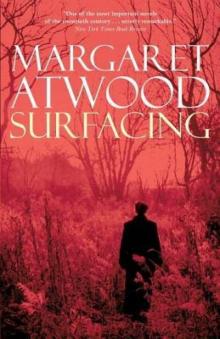 Surfacing
Surfacing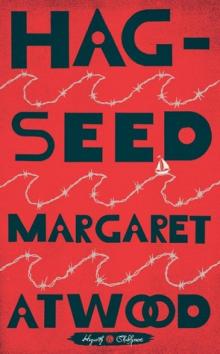 Hag-Seed
Hag-Seed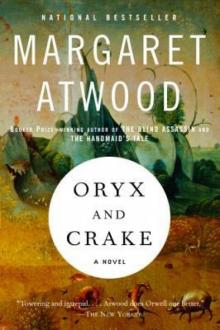 Oryx and Crake
Oryx and Crake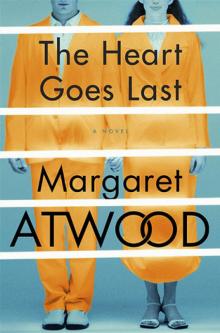 The Heart Goes Last
The Heart Goes Last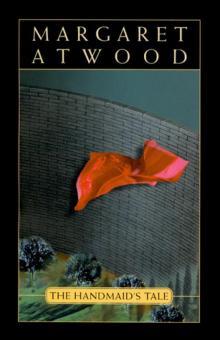 The Handmaid's Tale
The Handmaid's Tale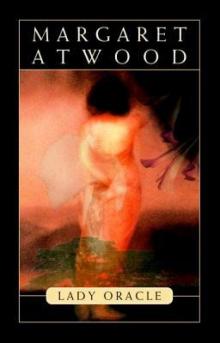 Lady Oracle
Lady Oracle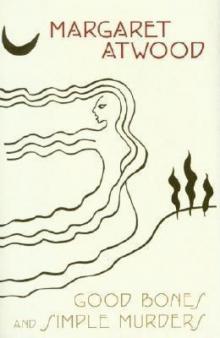 Good Bones and Simple Murders
Good Bones and Simple Murders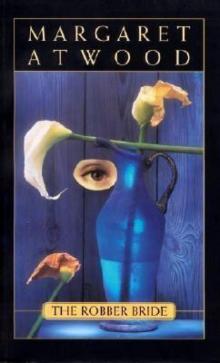 The Robber Bride
The Robber Bride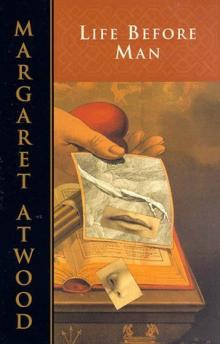 Life Before Man
Life Before Man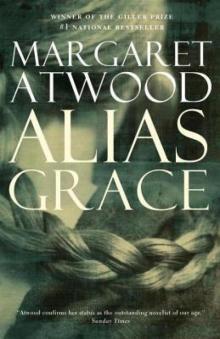 Alias Grace
Alias Grace The Blind Assassin
The Blind Assassin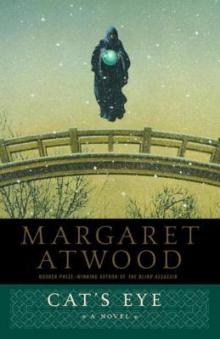 Cat's Eye
Cat's Eye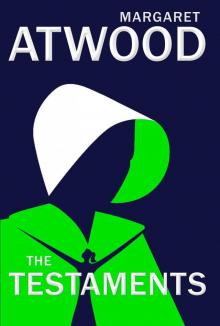 The Testaments
The Testaments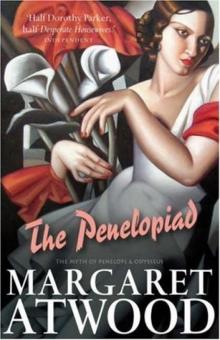 The Penelopiad
The Penelopiad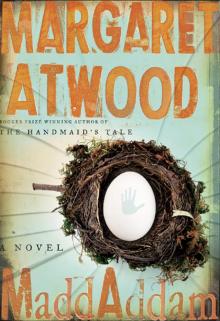 MaddAddam
MaddAddam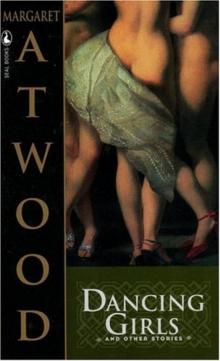 Dancing Girls & Other Stories
Dancing Girls & Other Stories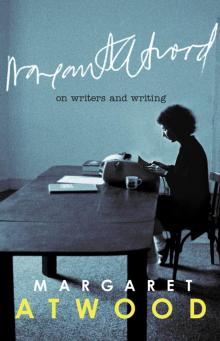 On Writers and Writing
On Writers and Writing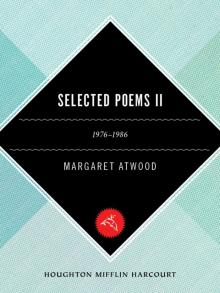 Selected Poems II (1976-1986)
Selected Poems II (1976-1986)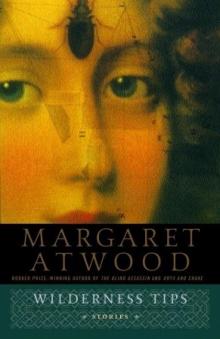 Wilderness Tips
Wilderness Tips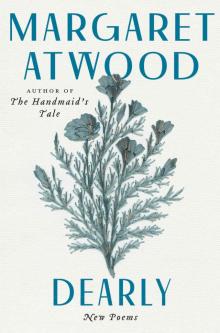 Dearly
Dearly The Tent
The Tent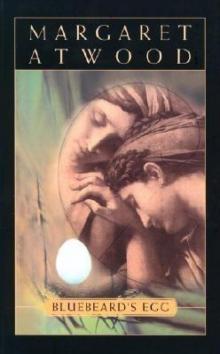 Bluebeard's Egg
Bluebeard's Egg The Edible Woman
The Edible Woman The Penelopiad: The Myth of Penelope and Odysseus
The Penelopiad: The Myth of Penelope and Odysseus Good Bones
Good Bones I Dream of Zenia with the Bright Red Teeth
I Dream of Zenia with the Bright Red Teeth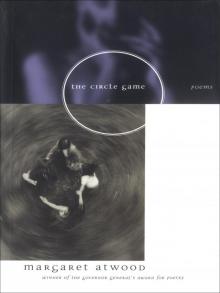 Circle Game
Circle Game Choke Collar: Positron, Episode Two
Choke Collar: Positron, Episode Two Stone Mattress: Nine Tales
Stone Mattress: Nine Tales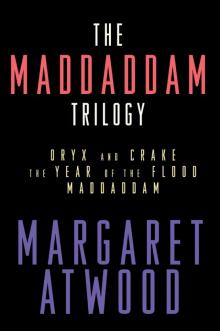 The MaddAddam Trilogy
The MaddAddam Trilogy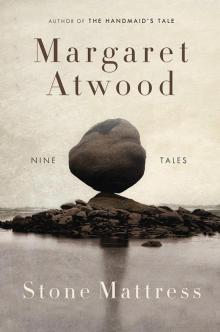 Stone Mattress
Stone Mattress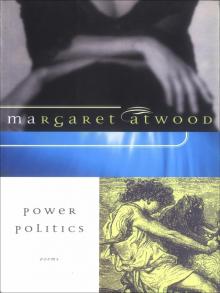 Power Politics
Power Politics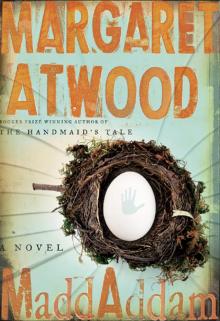 MaddAddam 03 - MaddAddam
MaddAddam 03 - MaddAddam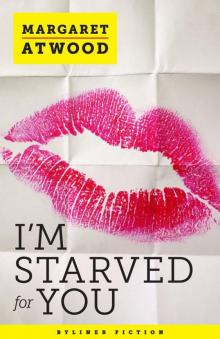 I’m Starved for You (Kindle Single)
I’m Starved for You (Kindle Single) Murder in the Dark
Murder in the Dark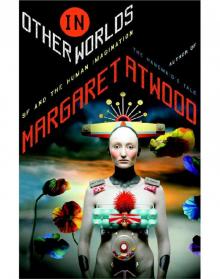 In Other Worlds
In Other Worlds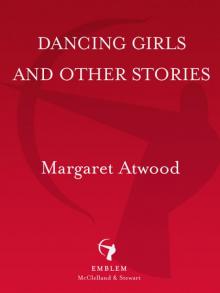 Dancing Girls
Dancing Girls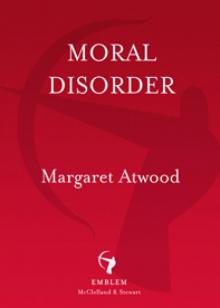 Moral Disorder
Moral Disorder